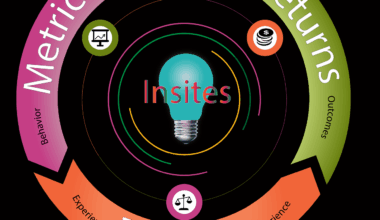Understanding the Basics of Programmatic Advertising in Search Engine Marketing
Programmatic advertising represents a monumental shift in how digital advertising is executed. It relies on automated software to buy and sell ads in real-time, vastly improving efficiency. This technology allows advertisers to target specific audiences based on an array of variables such as demographics, online behavior, and even location. Unlike traditional advertising methods, programmatic advertising utilizes digital data to optimize ad delivery for maximum engagement. This makes it crucial for brands wanting to enhance visibility and reach. The process harnesses advanced algorithms that automate these tasks, thus enabling marketers to focus their efforts on strategy rather than execution. This streamlined operation also minimizes human errors. Fundamentally, programmatic advertising intertwines data analytics with advertising techniques. Consequently, marketers can achieve more precise targeting, ultimately enhancing the return on investment (ROI). Basic knowledge is essential for those entering the field. Familiarity with the various platforms and tools available will prove advantageous. Therefore, understanding these fundamentals opens avenues for success in search engine marketing and the broader digital advertising landscape. Moreover, the integration of programmatic strategies can result in significant long-term benefits for businesses aiming to remain competitive.
Key Components of Programmatic Advertising
The landscape of programmatic advertising includes several key components. The first essential element is inventory, which refers to the available digital advertisement space that publishers provide. Advertisers aim to purchase this inventory efficiently to reach their target audience. Secondly, ad exchanges serve as the marketplace where buyers and sellers connect. They facilitate real-time auctions, enabling advertisers to bid for impressions instantaneously. Another critical component is demand-side platforms (DSPs), which allow advertisers to manage multiple ad exchanges through one interface. DSPs provide data-driven insights to help marketers refine their campaigns. On the flip side, supply-side platforms (SSPs) assist publishers in making their inventory available for buyers. By optimizing pricing, SSPs help publishers maximize revenue from their ad space. Furthermore, data management platforms (DMPs) play a vital role in gathering, analyzing, and utilizing consumer data. Utilizing predictive analytics, marketers can tailor ads to specific audiences based on behavioral insights. Each component contributes uniquely to creating a comprehensive and efficient programmatic advertising ecosystem. Mastering these aspects can significantly enhance the success of programmatic campaigns within the search engine marketing realm and beyond.
In addition to understanding the fundamental components, it is crucial to consider the bidding types involved in programmatic advertising. Advertisers can choose between various bidding strategies, including real-time bidding (RTB) and programmatic direct. RTB is the most common method, allowing advertisers to bid for impressions on ad exchanges in real-time. This strategy is particularly advantageous for campaigns targeting niche audiences, as it delivers instantaneous results based on the latest data. On the contrary, programmatic direct involves pre-negotiated deals for guaranteed inventory, providing more stability and predictability in campaigns. In this setup, advertisers can secure specific ad placements without the unpredictability of real-time auctions. Additionally, hybrid models combining these strategies allow for both flexibility and predictability in reaching audiences. These methods empower marketers to tailor their approach based on budget, target audience, and campaign objectives. By effectively utilizing diverse bidding types, advertisers can reach their KPIs more effectively, ultimately enhancing the overall efficacy of their advertising campaigns. Understanding these dynamics allows marketers to adapt their tactics for optimal return on investment in the increasingly competitive digital landscape.
Benefits of Programmatic Advertising
The benefits of programmatic advertising are abundant and transformative for businesses. One of the most significant advantages is enhanced efficiency, as automation significantly reduces the time and effort needed for ad placements. Programmatic advertising empowers real-time decision-making, helping businesses swiftly adjust their strategies based on performance metrics. Furthermore, the level of targeting offered is unprecedented. By leveraging audience data, advertisers can create highly personalized ad experiences that resonate with consumers. This personalized approach fosters stronger customer connections and increases conversions. Additionally, programmatic advertising often leads to reduced costs compared to traditional methods. Since advertisers can optimize their bids in real-time, they avoid overspending on ineffective placements. Programmatic platforms also provide extensive analytics and reporting tools, enabling advertisers to track performance accurately and adjust strategies accordingly. This data-driven approach allows for continual optimization of campaigns based on user interactions. Ultimately, these advantages enable businesses to stay ahead of the competition and achieve their marketing goals effectively. As the digital marketing landscape continues to evolve, embracing programmatic advertising becomes essential for brands aiming to thrive in a data-driven world.
A major consideration in programmatic advertising is the importance of data privacy. With growing concerns over data security and consumer privacy, adherence to regulations is crucial. Advertisers must ensure that their data collection and usage practices comply with legislation like GDPR and CCPA. Improper handling of consumer data can lead to significant penalties and loss of credibility, underscoring the importance of establishing transparency. Additionally, balancing personalized advertising with consumer rights is a delicate task. Businesses must prioritize ethical data use while maximizing their targeting capabilities. This requires a robust strategy that is both respectful of user privacy and detailed enough to provide meaningful insights. Ensuring consumer trust is paramount, as consumers increasingly demand transparency and control over their personal information. Leveraging opt-in consent mechanisms and allowing users to manage their data preferences can significantly enhance trustworthiness. By prioritizing data privacy, advertisers can build stronger relationships with their audiences. Therefore, understanding the landscape of data laws and ethical practices is essential for successful programmatic advertising, fostering a sustainable environment that benefits both businesses and consumers in the digital space.
Measuring Success in Programmatic Advertising
Measuring the success of programmatic advertising is a vital practice that allows marketers to refine their strategies. Key performance indicators (KPIs) serve as benchmarks to gauge effectiveness. Metrics such as click-through rate (CTR), conversion rate, and return on ad spend (ROAS) are essential for assessing how well campaigns perform. Additionally, engagement metrics like time spent on the website or social media shares provide valuable insights into user interaction. Utilizing advanced analytics tools enables advertisers to aggregate and analyze data, identifying trends that inform future decisions. Understanding the journey taken by users from ad exposure to final action is critical in this analysis. By tracking these pathways effectively, marketers can pinpoint strengths and weaknesses in their campaigns. Furthermore, A/B testing allows businesses to experiment with different ad variations, helping optimize messaging and creative design for peak performance. Establishing a feedback loop involving continual evaluation and adjustment enhances campaign longevity. Ultimately, effective measurement ensures that investments in programmatic advertising are worthwhile by providing actionable insights. Advertisers who adopt a measurement-focused mindset can significantly improve the performance of their campaigns and achieve their marketing goals.
In summary, programmatic advertising fundamentally transforms the search engine marketing landscape. Its reliance on effective data and automated processes enables marketers to target the right audience with precision, enhancing return on investment significantly. Understanding the foundational aspects, components, and benefits is essential for navigating this complex ecosystem. Additionally, prioritizing data privacy while ensuring personalized advertising can create a trusted relationship with consumers. Employing various bidding strategies alongside continuous measurement helps create comprehensive campaigns that adapt effectively to changing market dynamics. Emerging technologies, such as artificial intelligence and machine learning, are further fueling innovations in programmatic advertising, making it necessary for marketers to stay ahead in these trends. As the competition intensifies, harnessing the power of programmatic advertising can lead to substantial advantages in terms of efficiency, efficacy, and reach in the digital marketing landscape. Embracing this dynamic approach equips businesses with the necessary tools for success. Ultimately, as the industry evolves, marketers who integrate programmatic strategies into their overall marketing plans will be the ones who thrive and sustain growth in an ever-changing environment. Staying informed and adaptable is key to navigating the future of search engine marketing successfully.
Finding Your Optimal Strategy
Incorporating programmatic advertising into search engine marketing demands a tailored approach for success. Each business is unique, requiring strategies that align with specific goals and target audiences. Initial steps involve extensive market research to identify key insights about consumer behavior, preferences, and emerging trends. Defining your audience allows for the creation of targeted campaigns that resonate with potential customers. Using segmentation techniques, you can group audiences by demographics, interests, and online behaviors, enhancing targeting capabilities. Analyzing existing data helps refine strategies and adds context for future campaigns. Moreover, continuous optimization throughout the campaign lifecycle is vital. Leveraging real-time analytics enables quick adjustments, ensuring that resources are allocated to high-performing ads. Establishing clear objectives and regular reporting will provide insight into potential areas for improvement. Furthermore, collaboration among teams—creative, data analysts, and marketers—enhances innovative strategy formulation and execution. Testing different formats, placements, and bids will also allow for the identification of what resonates best with your audience. Therefore, iterating your strategies based on empirical data helps elevate programmatic advertising efforts, ensuring your campaigns achieve maximum effectiveness within the competitive digital environment.


